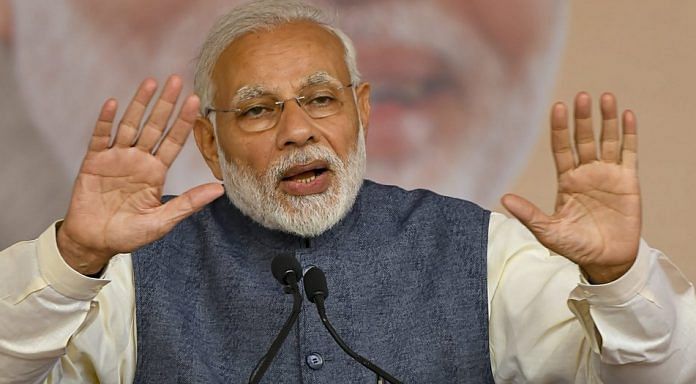Concerned over Modi government’s move to scale down growth numbers for all sectors for years prior to FY12, economists ask for explanatory notes.
New Delhi: Nearly a month after the release of controversial GDP back-series data, economists still await detailed notes from the Narendra Modi government explaining how the growth numbers for the years between 2005-06 and 2011-12 were arrived at.
Since the release of the data on 28 November by the Ministry of Statistic and Programme Implementation (MoSPI), the new GDP numbers using the base year 2011-12 have been at the centre of controversy.
In the new data, the Union government altered real growth rates for the first time, sparking a heated debate with the opposition over the economic performance during their respective tenures.
Economists have expressed concerns on how the government systematically scaled down growth numbers for all sectors, including manufacturing, for the years prior to 2011-12 and are awaiting detailed notes to see the sectoral calculations.
A ministry official, however, said the detailed notes will be released shortly.
“Detailed note will be put up shortly on web. We are presently engaged in compilation of revised estimates which will be out in January end and in Parliament related issues,” said the official who did not wish to be identified.
The back-series GDP data showed that growth under the Congress-led United Progressive Alliance (UPA) government was much lower than initially estimated and that India never grew in double digits.
Also read: On GDP, it’s time to construct an Indian version of the Li Keqiang index
Concerns
After the release of the data, former finance minister and Congress leader P. Chidambaram called it “a bad joke” and a “hatchet job”.
The government’s move to completely disregard a report of the sub-committee of the National Statistical Commission — which comes under MoSPI — headed by N.R. Bhanumurthy, a professor at the National Institute of Public Finance and Policy, further added to the concerns.
The commission’s back-series calculation, released earlier this year, showed that the Indian economy grew at a much faster pace during UPA’s tenure and registered double-digit growth in two years — 10.23 per cent in 2007-08 and 10.78 per cent in 2010-11.
Speaking to ThePrint, noted economist Indira Rajaraman said it is appalling that the government revised the real growth rates in the back series.
“We have had changes of base period several times. But you will never alter the real growth rates in the old series as it will lead to chaos as many research works have been done based on these calculations,” said Rajaraman.
The economist said that the base period is changed because new activities crop up.
“But that also means that they didn’t exist before or their volumes were small that there was no need to add them to the GDP calculations. You construct a splicing factor and update the nominal GDP leaving GDP growth rates unchanged,” she said.
Also read: New GDP data has more credibility, says Arun Jaitley
New data
The new data suggested that the highest growth rate of the Indian economy was 8.5 per cent, achieved in 2010-11, as against 10.3 per cent that was initially estimated.
The data further showed that the Indian economy grew at an average of only 6.67 per cent in the nine years through 31 March 2014 (UPA’s tenure), slower than the 7.35 per cent achieved in the four years through 31 March 2018 (NDA’s tenure)
The Modi government is expected to use the data to showcase its superior management of the economy in the run up to the 2019 Lok Sabha elections.




Not serving any useful purpose. When everyone, starting with serious investors, both foreign and domestic, begins to disbelieve official statistics, this becomes an exercise in futility and self delusion.